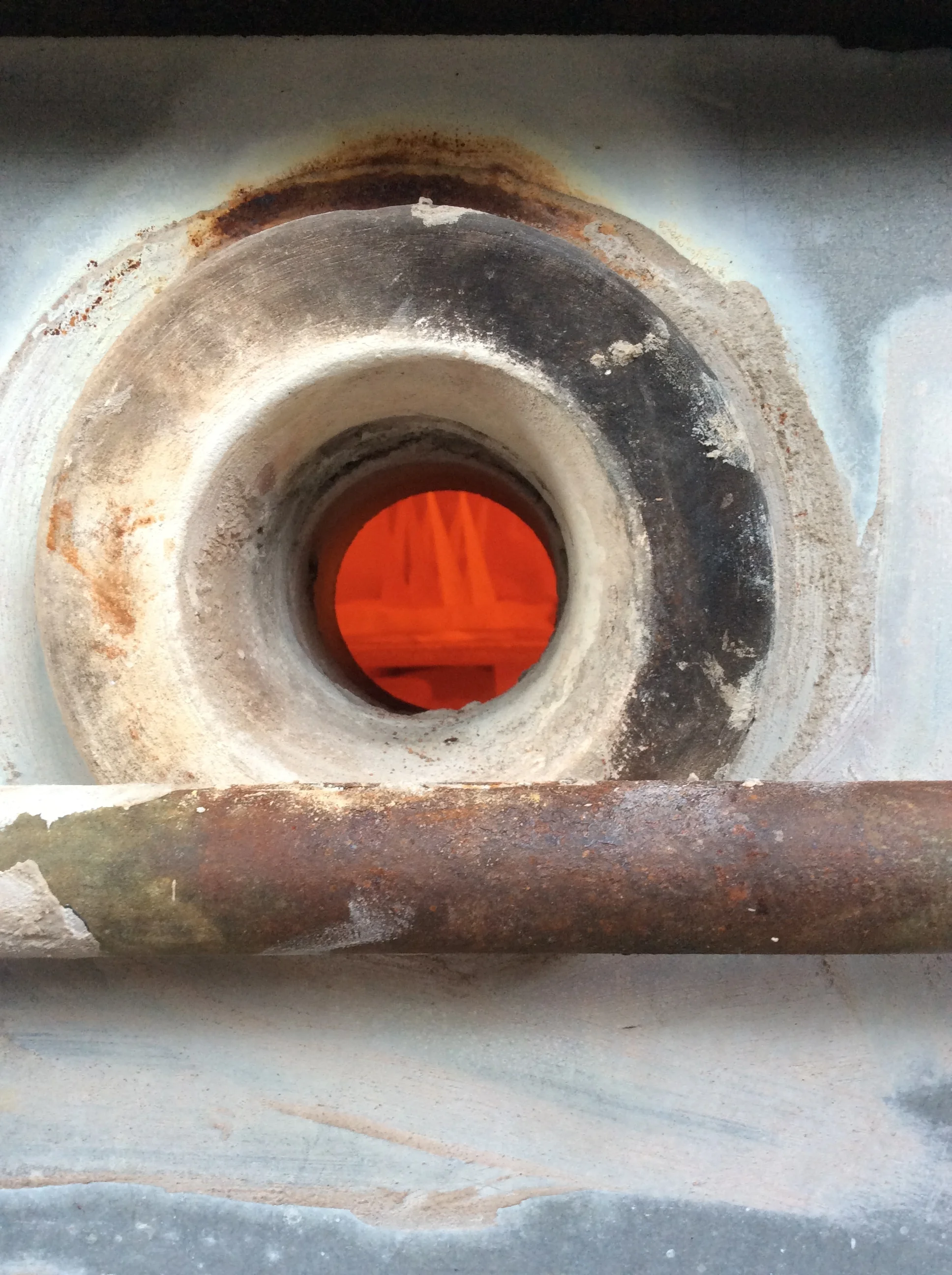I strive for each piece to be visually engaging and delightfully tactile.
Making for the Salt Kiln
After forming the pieces on a potter’s wheel or by hand-building them, I draw and paint on each piece with unique designs. I create the imagery by drawing with pigmented slips either by incising into the clay or with a raised line. I then paint with waxes, oxides, clay slips and glazes. I intentionally leave the porcelain or stoneware bare in areas. These segments are glazed by the salt during the firing process. The salt reacts to the surface clay and glazes in different ways, leaving matte, sheen, and some runny glazed areas. The result is a piece with an active, complex surface.
Salt Firing
When firing a salt kiln, salt is put directly into the kiln through special ports over the flame. This is done close to the end of the firing process when the clay is becoming slightly molten, about 2340°F for porcelain. Inside the kiln, the salt releases sodium, which forms a new chemical bond with the silica that is in every clay-body. Together they form an atmospheric glass, a glaze carried by the flame that kisses the contents of the kiln with an uneven, directional and orange-peel-like surface. The clay can blush or flash orange from the atmospheric firing. The amount of salt glaze distribution on the pieces depends on where the pot is situated, how the kiln is stacked, how much salt is introduced into the kiln, and more. Each kiln opening is full of surprises.

